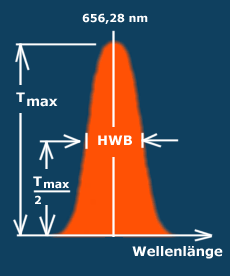Temperature controlled H-alpha-filters (lambda = 656,3 nm) with electronic temperature control (combined heating and cooling!)
Such professional filters show an unsurpassed abundance of details by using the full aperture of the telescope and are thus the first choice for semi-professional observers / photographers as well as for scientific use.
Solar Spectrum H-Alpha Filters give you an incomparable view of our Sun's eruptive surface. The SolarSpectrum filters follow the classical design and are placed behind the telescope in the focuser (although this requires a D-ERF energy rejection filter in front of the lens). In combination with a telecentric system tuned to the focal length of the telescopic, between 2/3s of the aperture and the full aperture of the telescope can be used with most refractors and SC telescopes, depending on the telescope's f/ratio! The telecentric system parallels the beam of light and extends the focal ratio of the telescope to the mandatory value of about 1:30.
Other narrow-band H-alpha filters are placed in front of the telescope lens. They are avaiable at affordable prices only up to 90mm diameter. For larger telescopes, the aperture of the telescope is stopped down by the filter. This reduces both light gathering power and resolution of the telescope dramatically!
You can read more about H-alpha observing and photography in these articles on our website www.astrosolar.com:
How does a SolarSpectrum H-alpha-filter work?

The graph shows you schematically the construction of a narrow-band H-alpha filter of the modern generation. First, the light passing through the filter meets an anti-reflection layer (the light intensity of the chromosphere is about 1 million times weaker than that of the photosphere, therefore no or little stray light must occur in the filter). Thereafter, the light passes a filter that removes a large part of the unwanted light from the spectrum.
Next is the core of the filter, a Fabry Pérot Interferometer or Fabry Pérot Etalon.
Subsequently, another filter follows which blocks further wavelengths and isolates the H-alpha line, then another anti-reflection layer. The whole filter block sits in a housing and is heated to a very specific temperature.

The Fabry Pérot Interferometer
The graphic on the left also schematically shows the Fabry Pérot etalon a bit more detailed. The light of the Sun comes from the right, indicated by the spectrum. The first filter is a very broad filter centered around the H-alpha line. Thereafter, the light hits the Fabry Pérot element.
The Fabry Pérot Etalon consists of two parallel and partially transparent glass plates or etalons (special plastics) with an intermediate air layer. Light beams are often reflected in the air gap on the facing glass surfaces. By interferece, most wavelengths are cancelled out.
Depending on the construction and dimensions of the etalon, only the H-Alpha line remains with some secondary maxima, which are filtered out by the last filter (indicated by the vertical red bar). By choosing the thickness of the air gap and the etalons, you can filter out any lines from the spectrum.
The FWHM (full width at half maximum, describing the narrowness of filtering) achieved with such filters is up to 0.2 Å (0.02 nanometer) depending on the effort and construction.

What is the FWHM (full width at half maximum) of an (H-alpha) Filter
DThe graph explains the FWHM or full width at half maximum. On the horizontal axis, the wavelength is specified in nanometers and on the perpendicular the transmission (light transmittance) of a filter. The FWHM is defined as value in nanometers or Ångström at a transmission of T / 2 max.
In order to see surface details in the H-Alpha light, FWHMs <1Å (0.1 Nm) are required. For example: The deep sky H-Alpha filters used by astrophotographers for H-II regions have FWHMs of around 10 to 50 Å (1 to 5 nm).
In addition, of course, the filter must exactly hit the wavelength of the H-alpha line up to a few tenths of nanometers. Therefore, these filters are heated because you can tune the filter exactly to the line via the temperature.












